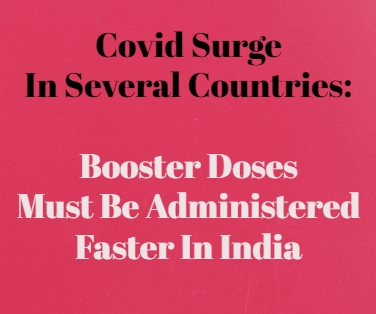

By Our Editorial Team
First publised on 2022-03-19 05:33:03
With a second Omicron wave making its appearance in China, south-east and East Asia and several European countries, the Centre has rightly sounded an alert and asked states to send samples for genome sequencing and maintain a vigil on clusters for greater disease surveillance. It has also started vaccinating kids between 12 and 14 from March 16 while doing away with the co-morbidity condition for booster dose for senior citizens.
Despite the fact that the surge is now happening in countries that have administered booster doses, vaccines still remain the best shield against serious, life-threatening infections. India will have to modify its vaccine policy to start giving booster doses to all adults in phases. Since the booster programme is now open to all senior citizens, it must be opened to those above 45 and then to those above 18 in the next couple of months.
It was mainly due to the fact that nearly 95% of adult Indians had received at least one dose of the vaccine that the third wave was not as destructive as the second (apart from the fact that Omicron is a milder variant). But most adults had taken the second dose 6 months ago and that means that their immunity levels have reduced. In India, only 1.4 booster doses per 100 people have been administered till now. Thus, it is urgent that the booster dose is administered fast.
Further, as per research carried out at CMC, Vellore, a mix-and-match strategy in giving booster doses works better. For instance, if those who have received two doses of Covaxin are now given Covishield as the booster dose, it shows a six-fold rise in anti-bodies. However, the same has not been found true to those who were given both doses of Covishield earlier. But since more than 80% persons in India were vaccinated with Covishield, this needs further study. Since the vaccine bouquet has grown, the mix-and-match study should be conducted using different permutations and combinations to find out the best booster dose.











